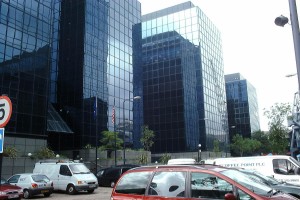With the release of Interxion’s 2009 results, we thought it might be interesting see how the two European headquartered operators might contrast and compare.
In fact it turned out to be quite hard to find any differences, though those that there are tell an interesting tale.
|
Telecity |
Interxion |
|
|
2009 Revenue (Euros, Millions) |
192m, +27% (increase on 2008) |
171m, +24% |
|
Year End Capacity (sq m) |
58,496 |
54,879 |
|
Capacity Added in 2009 |
7,084 sq m |
11, 600 sq m |
|
Capex Spend in 2009 (€) |
100m |
100m |
|
Growth via existing customers |
60% |
70% |
|
Number of Countries |
7 |
11 |
|
Number of data centres |
23 |
26 |
|
Customer Numbers |
3500 |
1100 |
So, on most criteria the two companies are remarkably similar. Apart from the fact that Interxion operate in four more countries than Telecity (Spain, Austria, Denmark and Switzerland, though worth pointing out that Telecity operate in Italy where Interxion don’t), the biggest difference between the two companies is in fact customer numbers, with Telecity claiming over three times the number of clients than Interxion.
Why might this be and what does it mean for customers today? We think one of the reasons there is such a difference goes back to Telecity prior to the 2005 merger of Telecity and Redbus. I n particular, Redbus went to great efforts in its early days to attract smaller clients as exemplified by their simple pricing strategy (£4000 per annum or £350 per month per rack) and a customer friendly monthly rolling contract, somewhat harking back to the ISP background of Redbus founder Cliff Stanford, who had co-founded Demon Internet before selling out to Scottish Telecom in 1998. Thus the Redbus sites that were rolled into the combined Telecity Group contained lots of smaller ISP and hosting clients. A good example of this would be 6&7 Harbour Exchange in London’s Docklands. Another factor behind the difference in client numbers will be the number of managed services customers that Telecity has, especially since its acquisition of the European operations of Globix in September 2006. Globix added some 400 clients to the new group, hosted across their two London data centres.
n particular, Redbus went to great efforts in its early days to attract smaller clients as exemplified by their simple pricing strategy (£4000 per annum or £350 per month per rack) and a customer friendly monthly rolling contract, somewhat harking back to the ISP background of Redbus founder Cliff Stanford, who had co-founded Demon Internet before selling out to Scottish Telecom in 1998. Thus the Redbus sites that were rolled into the combined Telecity Group contained lots of smaller ISP and hosting clients. A good example of this would be 6&7 Harbour Exchange in London’s Docklands. Another factor behind the difference in client numbers will be the number of managed services customers that Telecity has, especially since its acquisition of the European operations of Globix in September 2006. Globix added some 400 clients to the new group, hosted across their two London data centres.
In terms of meaning today we have the following views: Each company creates a very similar product to similar standards (doubtless howls of protest to follow from each)! However, the differences appear at a facility and regional level. For example, its impossible to say who is the best or who has the best site; in our view the “best” is a very subjective criteria. The best colo solution for client A may be useless for client B, for example if one is a telco looking to connect with other carriers whilst the other is a digital photo library looking for cheap kilowatts, the “best” solution would be completely different for each customer. There are also differences in each location, for example London is clearly Telecity’s stronghold, with no less than eight separate data centres whilst in Paris though Interxion have expanded rapidly and have now launched their sixth site whilst Telecity have only just opened their second. Newer facilities are easier to compare in some respects as you have essentially similarly specified facilities with no legacy network or customer base to attract clients with. On the other hand in established sites the client and carrier mix can offer attractive opportunities even in spite of the disadvantages an older specification can sometimes entail such as limited power densities and its in these facilities where customer numbers matter more. For example, if an 80,000 sq ft site only has a dozen or so installed clients then the implication would be the operator is focussing on a few reasonably large scale clients and might be less interested in a one rack only customer. On the otherhand, if a facility has 100s of installed clients then clearly the facility and operator suits small scale clients and furthermore, will probably offer a much more competitive marketplace for other products and services such as IP bandwidth. As perhaps we might be expected to say, this is where market knowledge can really make the difference!.